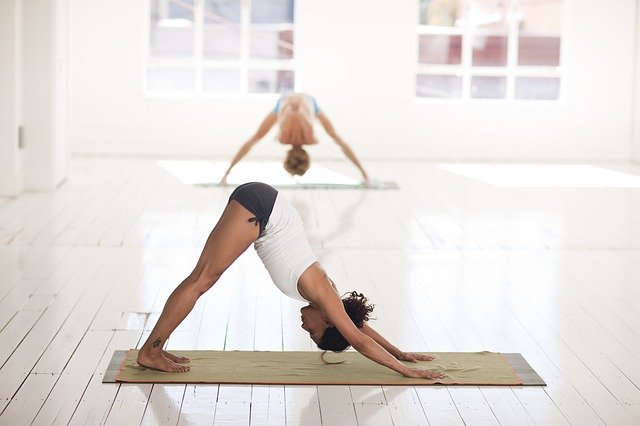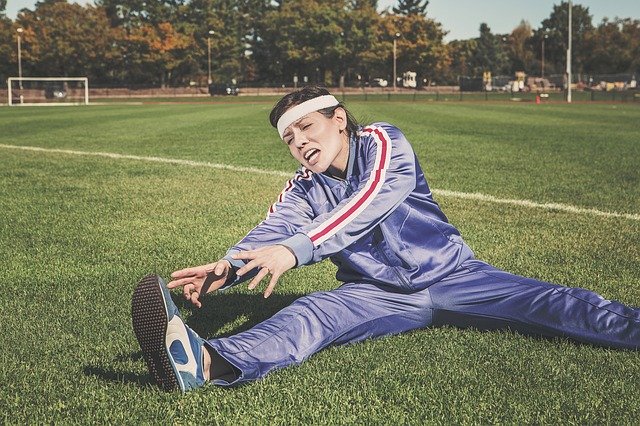A couple of weeks ago I wrote a blog about the importance of alignment within yoga. But then I got the question: how do you get a proper alignment when your body just doesn’t want to do it?!
I’ve already written a couple of blog posts about the different types of props there are, like blocks and straps. But I haven’t really explained how to use them. Or how they could be of use to you.
This isn’t going to be a very big article, but it might be a great one for you to use. If you have any questions, please don’t hesitate to ask them down below.
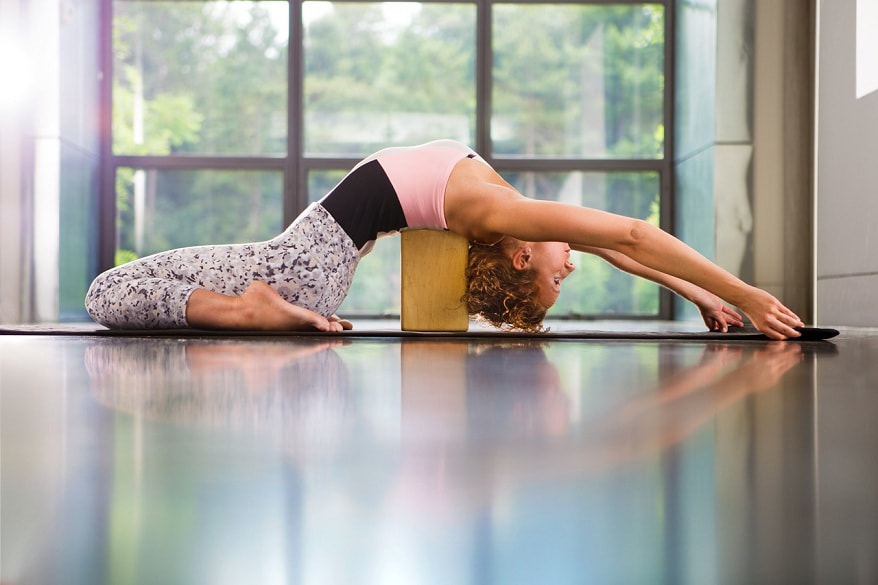
What kind of props are there?
Let’s just have a look at the different types of props you have.
#1 yoga Blocks
I’ve mentioned already above that there are blocks. These are basically what they say they are: they are a rectangular form shape. It looks very simple, and it even is, but it can be a big help in your yoga practice!
Blocks can be used in different kinds of poses like:
- Balancing poses
- Seated poses
- Supine poses
- Prone poses
Is there an inexpensive alternative for a yoga block?
Well, yes there is.
Therefore, there are a couple of alternatives for yoga blocks. And probably you’ve already got them at home!
Even though I would say that it’s always best to just buy a block as they are inexpensive on their own already. You already have blocks under 10 USD or 7 EUR. Which is quite alright. However, as you have two arms and two legs, it’s always good to have a couple of blocks. This means that you are already looking at a price of 20 dollars.
It isn’t that bad, but if you are at the beginning of your yoga practice, you don’t want to pay too much.

You can get really creative with these. If you are looking for just something to grab while you are in a balancing pose, you can easily just use a tin of canned goods! Yes, you’ve read this correctly, you can use a can of tomatoes to support your yoga practice.
I wouldn’t put two on top of each other though, as this might compromise stability.
If you are looking for support on the floor or for your back, I would advise using a book or two. If you have a very big book, like an encyclopedia, that’s even better. I find that the latter works best as you just need one of them and they have a hardcover which gives you a better feel.
As you see, these are some common household products that you probably already have laying around anyway. But the list is not just limited to these two, just be creative and see what you come up with yourself.
However, if you are planning to get serious with your yoga practice, it might just be good to spend the extra buck on a proper block.
#2 Yoga Straps
This is yet again a really simple prop, but one of my favourite ones to be honest! A strap looks a bit like a belt and in the Dutch language, we also call it that.
A yoga strap is great to go deeper into a pose or to help you with stability or it can be used as an extension of your arms. By grasping the straps with both hands you can get the feeling that you are able to reach for your fingers, while actually nog being your fingers.
These straps are normally also not that expensive and have more or less the same price as a yoga block. However, you would only need one strap in general, so it isn’t a big extra cost.
Is there an inexpensive alternative for a yoga strap?
You don’t feel like buying a yoga strap? No worries, there are two different ways that you can use a strap without owning one.
If you have a belt, yes the one you use to keep your trousers up!
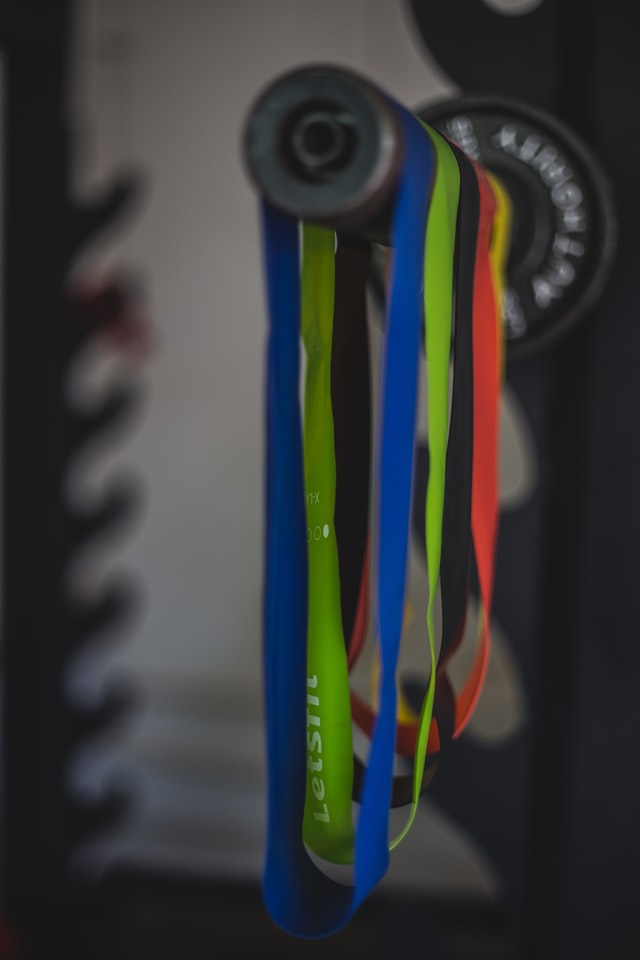
It is a bit limiting though as you might not get the best reach out of it from its loop. This is why a strap is so great, it has a great loop that you can use to go deeper into the pose. Well, unless you have a really big belt that would be fine as well.
If you are a gymgoer, you might have something already. You can use your gym material as a strap. If you have a resistance band, you might be able to use this one. But then be careful that you use the right resistance with it. Having too much might not put you into the asana as you want. Having too much might be too much for your body.
If you have neither of these, you might want to get yourself a blanket or a big towel and roll it up until you’ve got yourself a strap. Be cautious though, this blanket only can be used as an extension of your arms and to grab your feet, but other than that, it is quite limited.
#3 Yoga Bolster
Then we have our bolster! Another great addition to your yoga practice. However, it might be one of the most expensive props there is. You’ve got bolsters starting from 30 dollars, but I do have to say that these are a bit the smaller ones. For a decent one, you should really go for something over 40 dollars.
Especially if you aren’t going to use it very often and you are on a lower budget, it doesn’t make sense at all to purchase one. The bolster is often used during yin yoga and restorative yoga, and in other styles, it’s rarely to never used at all.
Is there an inexpensive alternative for a yoga block?
If you don’t want to spend a lot of money on a bolster, or you just want to see if yin and/or restorative yoga are something for you, it might be good just to try out some inexpensive options. And there are a couple of ways that you might be able to do this.
First of all, gather all of your pillows! Yes you should get a bit more pillows than just two. Bolsters have buckwheat or a different type of firmer filling, making it that you are supported, but that you won’t sink away either!
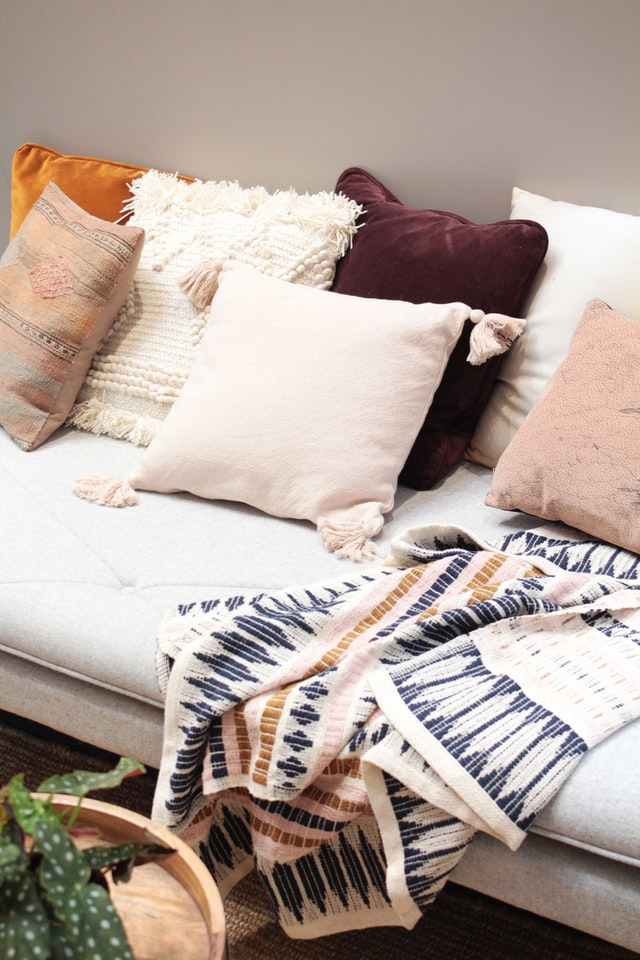
I always tell my students that if they don’t have a bolster, they should think about just using 4 medium-sized pillows! That looks like a lot, but just look around your house, chances are that you already have two pillows in your bed and another two on your sofa.
If you don’t have enough pillows, or you sink away too much, there is also a little alternative. If you have blocks you might want to use your block and cover it with a blanket(s). Roll up the blanket and put it on top of your bolster to get a similar effect.
Why do we use props in yoga?
But now let’s have a look at why we use these props and why they are actually quite important to use during your yoga practice.
I also want to add that there are more props, like a yoga wheel and yoga towels, but I’ve never used these and I can’t really say a lot about them. I always like to write from my experience, rather than of what I’ve heard or seen.
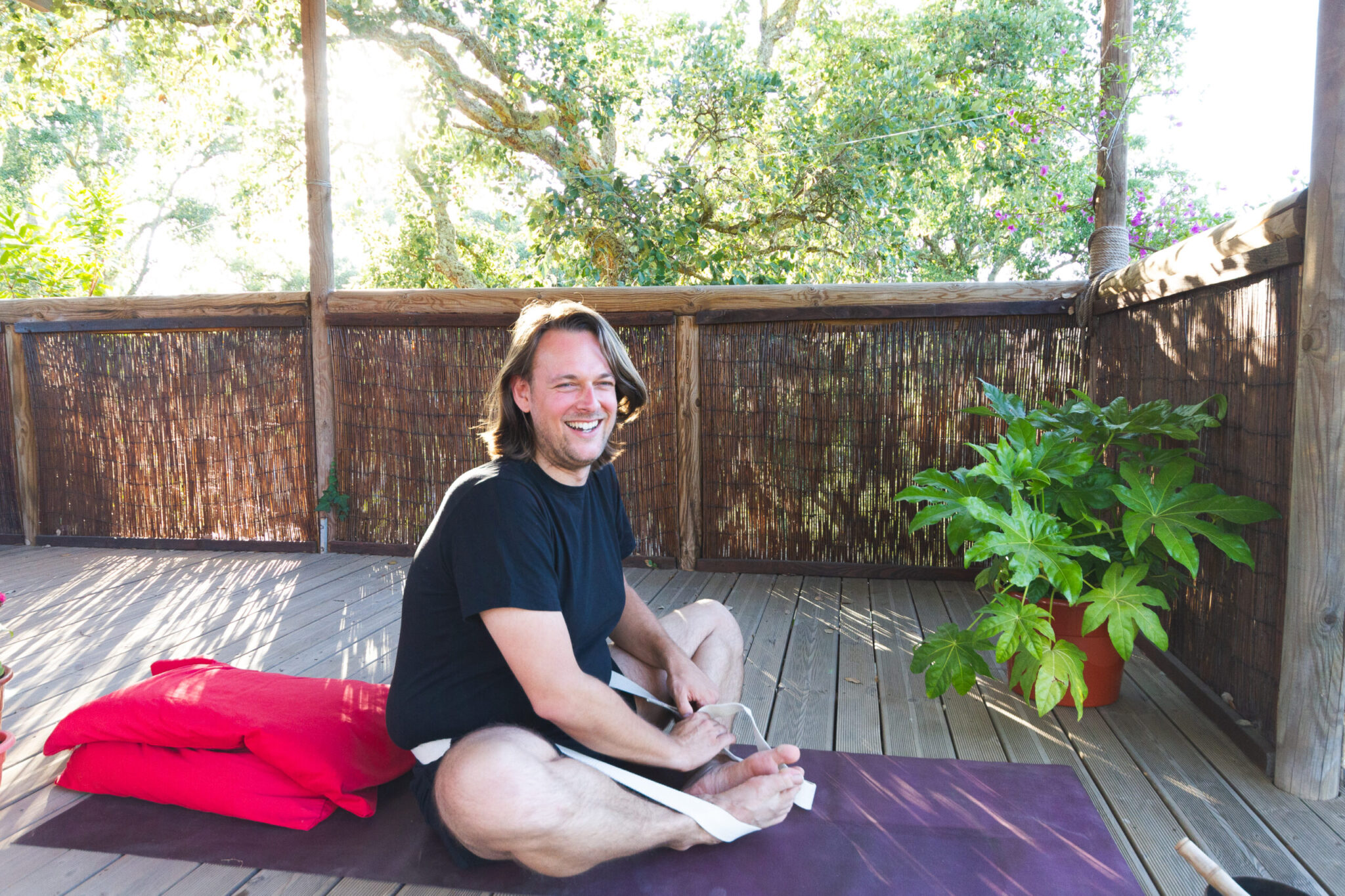
#1 Using props for alignment
One of the main reasons why we use props while doing yoga is to get the proper alignment in our yoga asanas. This is quite important for numerous reasons, and I’ve written them in this article. But to just mention the most important reason, is that it’s the safest for our body. When we have aligned properly the chance of injuries is a lot smaller.
We can use them in many different ways, and with many different asanas. So don’t be shy to use them. Very often I already mention in my classes when to use them and give different options. Normally a lot of yogi’s do this these days, so there is no shame anymore around them.
I especially love them in twists. They are amazing to go into trikonasana for example. Especially when you have shorter hamstrings, it might be nice to use a block to support your hand on.
#2 Using props for support
Another reason to use props is to get more support. We’ve already talked about alignment, and in a way they are a bit similar. However, when I talk about support I’m talking about using them in asanas where you can relax in your pose without having pain.
I have weak knees for example and going into reclined butterfly pose (supta badha konasana) was a nightmare. Therefore it was really nice to just put a couple of blocks underneath my knees to get some extra support.
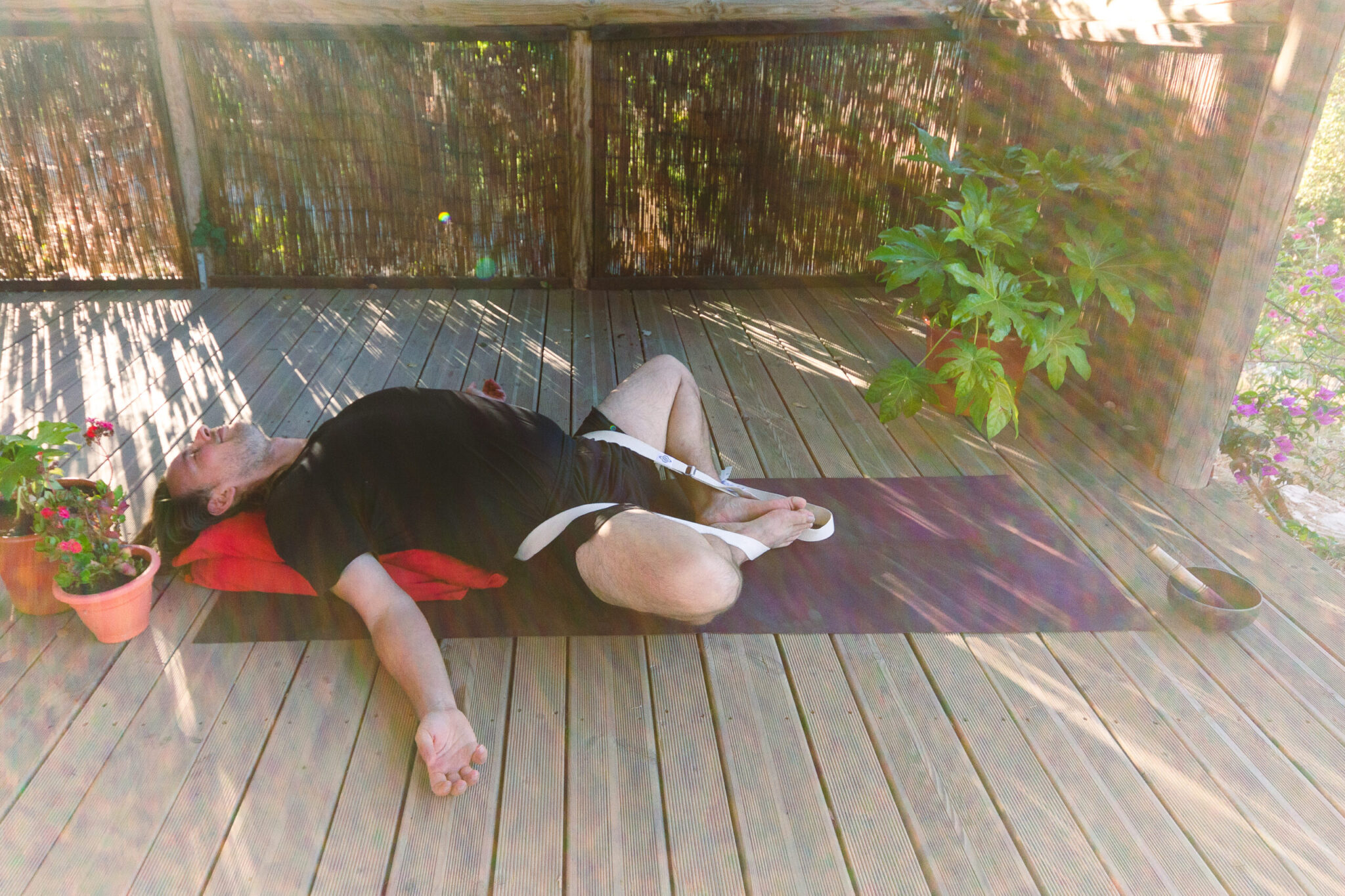
So, this is the difference between using props for alignment or using props for support.
#3 Going deeper into asanas with props
The last reason to use props during your yoga practise is to push yourself deeper into the position. Normally I’m not a fan of going really deep into an asana. But if you feel that you physically can go deeper, it might be good to do so.
And now I’m saying that it’s important that you keep an eye on your physical boundaries!
For example, when you go into forward fold and you feel that your hands are holding you back because they touch the floor, you can stand on two blocks to make sure your hands and arms can just hang loose!
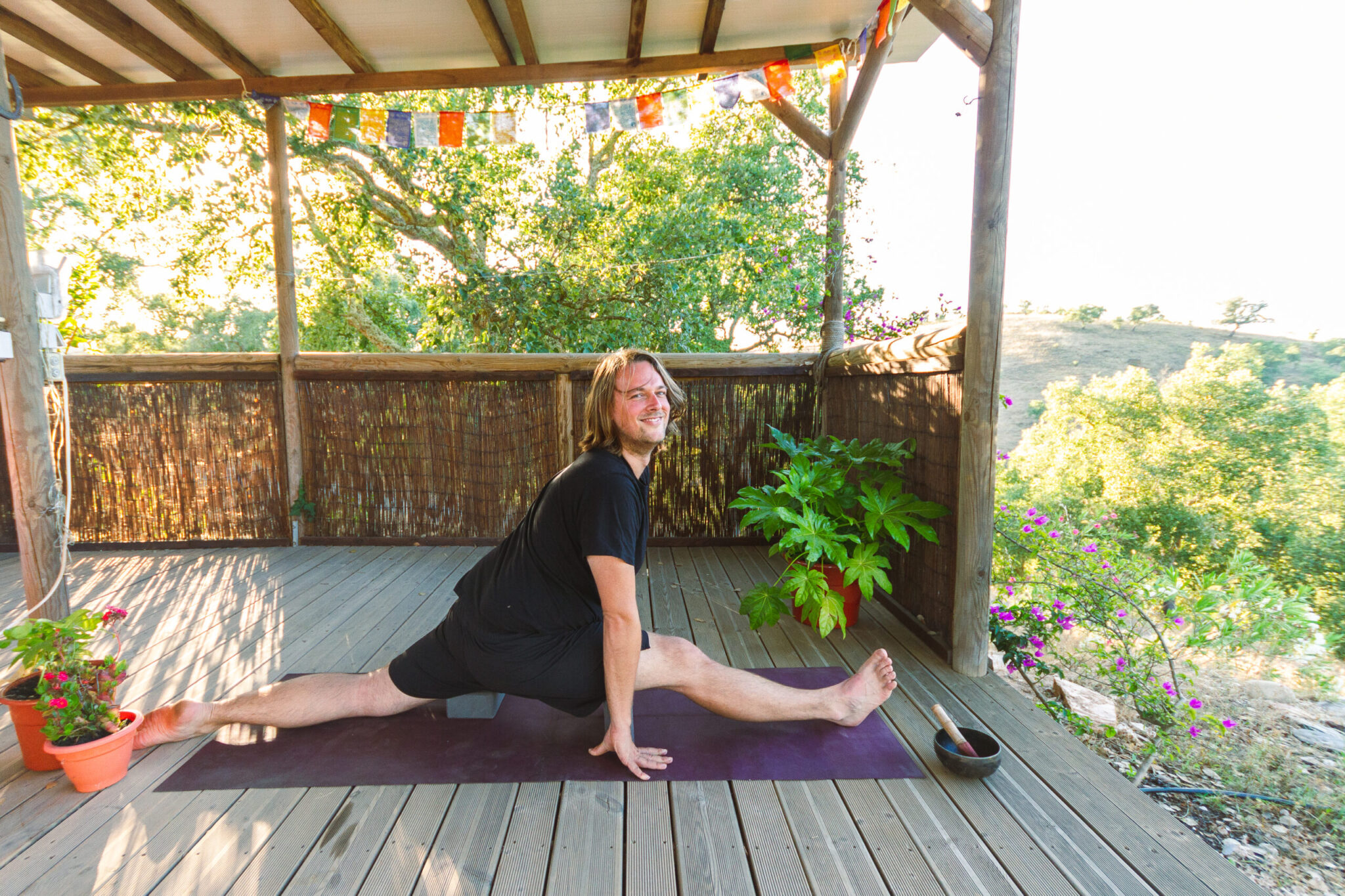
Well, that’s it for this article, if you have any questions, please don’t be shy to leave a comment in the section down below!


